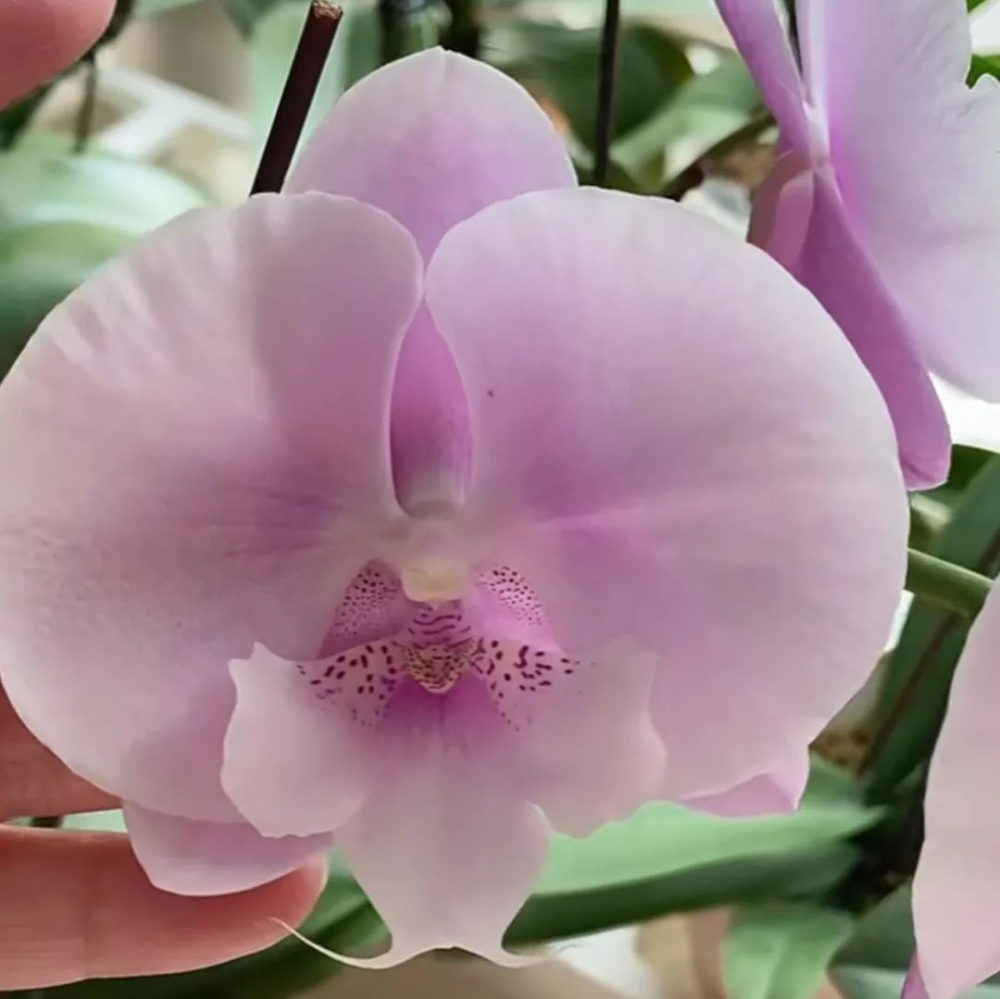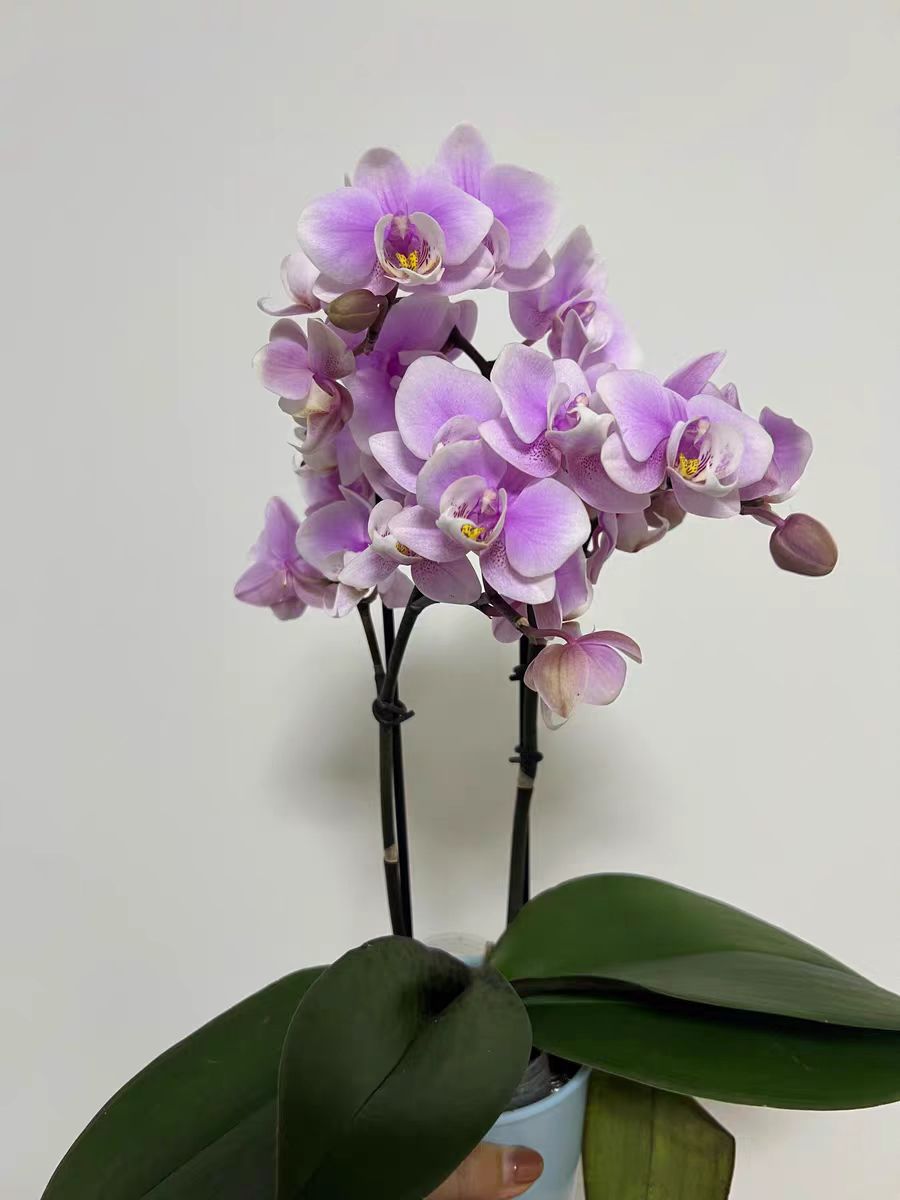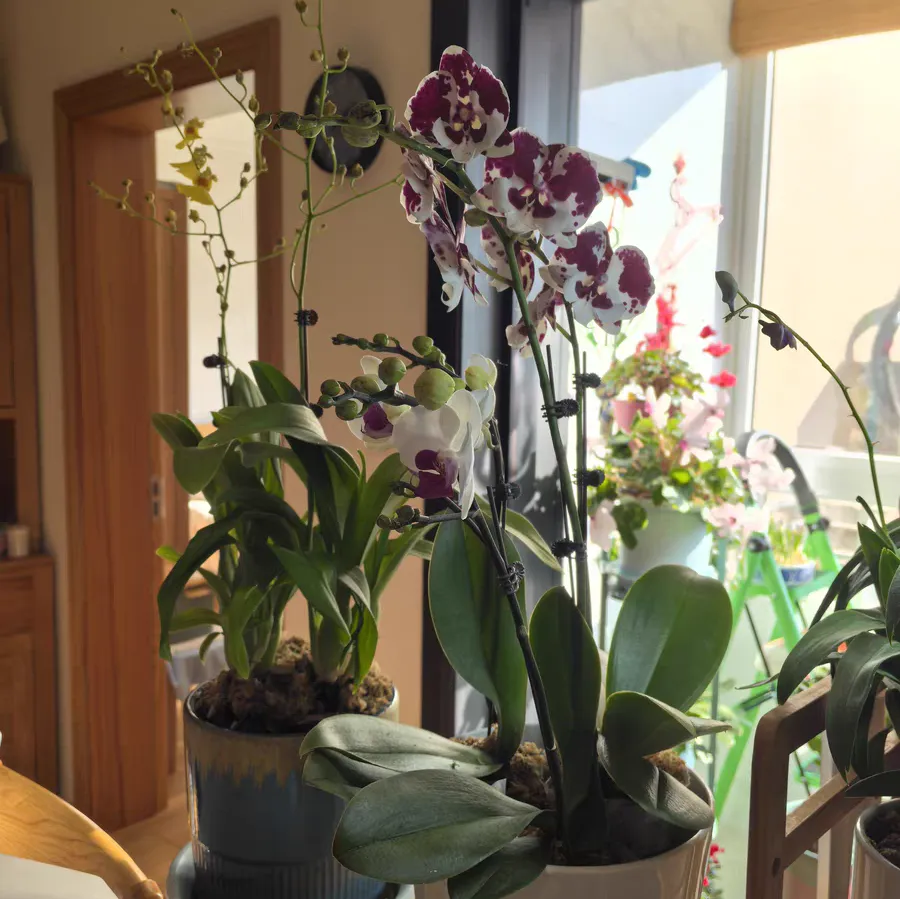Today, I'd like to introduce to you the breathtakingly beautiful Phalaenopsis with big pink flowers!
The petals of Phalaenopsis with big pink flowers are soft and delicate, and the color is a tender pink. Its flower shape is unique, and each flower unfolds just right. The stamens, surrounded by the petals, look even more charming and exude a fascinating charm.
The flowering period of Phalaenopsis with big pink flowers is quite long! Generally speaking, if properly cared for, it can keep blooming for about 2 to 3 months.
How to plant and care for it:
Substrate selection: Choose a substrate that is loose, breathable and has good drainage, such as sphagnum moss, bark, and coir. Before using sphagnum moss, it should be fully soaked and then gently wrung out until it is in a state where there is moisture in the hand but no dripping.
Light conditions: It prefers bright, scattered light and should avoid direct exposure to strong light. It can be placed near the window indoors with a gauze curtain for shading or on the windowsill facing east or north where the sunlight doesn't shine directly. If the light is too strong, the leaves will be burned and the flowers will wither prematurely. If the light is insufficient, it will affect the flowering and the color of the flowers.
Temperature requirements: The suitable temperature for its growth is between 15 and 28 °C. Keep it warm in winter, and the temperature should not be lower than 10 °C. When the temperature exceeds 30 °C in summer, it may enter a dormant state, and appropriate cooling measures should be taken, such as spraying water around it.
Watering skills: This is a crucial step. Its fleshy roots are prone to rotting due to waterlogging. Insert your finger into the substrate, and when the part 2 to 3 centimeters below the surface is dry, water thoroughly until the water flows out from the bottom of the pot. If the substrate is sphagnum moss, the watering frequency can be relatively low. For substrates with better drainage like bark, the watering times can be appropriately increased. Water less in winter, and in summer, you can increase the air humidity while avoiding waterlogging.
Fertilization methods: Adequate nutrients are needed for its growth and flowering. During the growing season (spring and autumn), apply a thin liquid fertilizer with a low concentration once every 2 to 3 weeks (such as the diluted Phalaenopsis nutrient solution). Before the flowering period, increase the proportion of phosphorus and potassium fertilizers to promote flower bud differentiation and flowering. When fertilizing, avoid splashing the fertilizer onto the leaves and flowers.
Precautions:
Ventilation is important: A good ventilation environment is required. It can be placed in a well-ventilated place like the living room, but avoid being directly blown by the wind, which can reduce the occurrence of pests and diseases.
Avoid frequent moving: It is sensitive to environmental changes. Once the placement position is selected, try not to move it randomly, otherwise it will affect its growth and flowering.
Pest and disease control: Common pests and diseases include anthrax, soft rot, and scale insects. Regularly check all parts of the plant, and deal with pests and diseases in a timely manner when they are found. For anthrax and soft rot, fungicides such as carbendazim can be used for prevention and treatment. For scale insects, you can use a soft cloth dipped in alcohol to gently wipe them off the leaves or use special insecticides, paying attention to the concentration and safety.
Does the Phalaenopsis variety with big pink flowers have a long flowering period?

Share with
Tagged in :




Leave a Reply